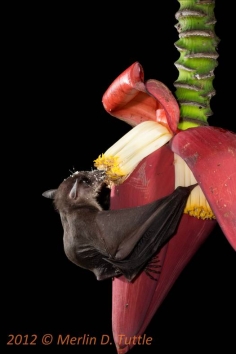Specialized and facultative nectar-feeding bats have different effects on pollination networks in mixed fruit orchards, in Southern Thailand
DOI:
https://doi.org/10.26786/1920-7603(2016)7Abstract
Recent advances in the study of pollination networks have improved our ability to describe species interactions at the community level. In this study, we compared the abundance and network strength of facultative and obligate nectar-feeding bats to determine their roles in pollinating mixed fruit orchards. We were particularly interested in the effect of distance from forests and caves on the foraging activity of these two bat groups. For this study, we examined 10 pairs of orchards; each pair consisted of one orchard near to (< 1 km) and one orchard far from (> 7 km) the forest edge. We estimated the abundance of each bat group (nectarivorous vs. frugi-nectarivorous) using video observations to determine floral visitation rates. A pollination network was then created for each of the 20 study orchards and network strength was calculated for each bat group at each orchard. We found that nectarivorous bats showed higher abundance and network strength than frugi-nectarivorous bats. Both bat abundance and network strength were negatively correlated with distance to the nearest cave, however, only network strength was affected by distance to the forest. These results corroborate the importance of nectarivorous bats in pollinating crops within southern Thailand’s mixed fruit orchards. Higher network strength of bats near forests and caves emphasizes the role of natural habitats as pollinator sources.

Downloads
Published
How to Cite
Issue
Section
License
Copyright (c) 2016 Tuanjit Sritongchuay, Sara Bumrungsri

This work is licensed under a Creative Commons Attribution 4.0 International License.











